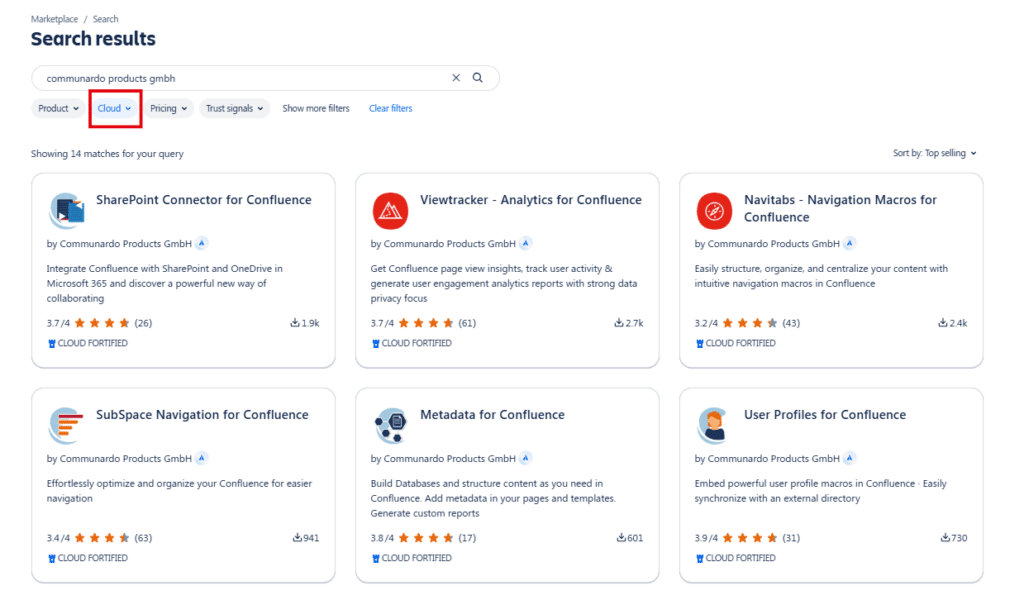Community resources
Community resources
Community resources
Is Atlassian Cloud Really Worth It?
7 Myths and the Real Benefits of Migrating
If you’re still on Atlassian Data Center, you’ve probably heard the push toward Cloud—and maybe you’ve resisted it. That hesitation is understandable. Cloud migration feels complex, disruptive, and full of unknowns. But the reality is different.
This article breaks down seven common myths about Atlassian Cloud migration—and shows you what companies gain when they switch. Whether you’re a system admin, project lead, or decision-maker, this guide will help you separate fact from fear.
1. “We’ll lose all our macros and layouts” — Not true
A common concern during Confluence Cloud migration is that tabbed content, panels, or custom macros won’t transfer.
Some legacy macros aren’t supported in Cloud. Take a practical example: Enterprise Theme for Confluence is a comprehensive theming and customization solution designed for Confluence Data Center. It enables organizations to transform Confluence instances into branded, user-friendly intranets or knowledge-sharing platforms. If you are currently utilizing it and are considering migration, rest assured that you won’t lose everything. Most layouts can be reconstructed using modern, cloud-ready applications such as:
- Tabs (macros “Tab Content Wrapper/Tab Element”) can be replaced with Navitabs – Navigation Macros for Confluence.
- Panels (macro “Titled Panelbox”) can be replaced with Advanced Panelboxes for Confluence.
- Metamenu and structured navigation can be replaced with SubSpace Navigation for Confluence Cloud.
- Language dropdown(s) & Pagetitle can be replaced with Translations for Confluence to create multilingual content and display the correct language to each user.
Planning your replacements in advance is essential, but rest assured, you won’t need to compromise on structured content. You can rely on our App Migration Center, which provides a detailed, step-by-step guide throughout the entire process.
2. “Cloud is less secure than our own servers” — It’s actually the opposite
It might feel intuitive to believe that hosting data on-premise is more secure, but today, that’s rarely the case. Self-hosted environments often rely on limited IT resources, slower patching, and inconsistent monitoring.
In contrast, Atlassian Cloud offers:
- ISO 27001, SOC 2, GDPR, and other enterprise-grade compliance
- Built-in encryption for data in transit and at rest
- Zero-downtime upgrades and automatic security patching
- The Cloud Fortified trust signal for Marketplace apps, ensuring higher standards for security, reliability, and support.
For most organizations, moving to the cloud significantly improves their security posture. In our blog post on Atlassian Cloud security and the shared responsibility model, we explain this in more detail.
And Atlassian continues to raise the bar: with its FedRAMP partnership, even government agencies can confidently move to the cloud. We’re proud that Navitabs is part of the early access program for the Atlassian Government Cloud — read more here.
3. “We’ll lose control over our environment” — Some control shifts, but much is gained
In Data Center, you control every upgrade, integration, and maintenance window. In Cloud, some of that is abstracted. But in return, you get:
- Fewer outages
- No manual patching
- A platform that scales automatically
You still control permission schemes, workflows, automation, and integrations without the infrastructure headaches.
4. “Cloud is too expensive” — Only if you compare license costs in isolation
It’s true that, at a glance, Atlassian Cloud licenses can appear more expensive than their Server counterparts. But this perception changes quickly when you look beyond the sticker price and assess the total cost of ownership (TCO).
Running your own infrastructure comes with significant hidden costs that Cloud eliminates, including:
- Server hardware and data center expenses
- Energy consumption, backups, and disaster recovery infrastructure
- Internal maintenance, monitoring, patching, and upgrades
- Security operations and compliance overhead
- Downtime-related productivity losses when self-hosted systems fail or require manual upgrades
When you consider these costs, not to mention the value of predictable billing, automatic updates, and 24/7 monitoring, the cloud often turns out to be the more cost-effective option. For a more detailed understanding, Atlassian offers a Migration Cost Calculator to help organizations estimate potential savings.
Ultimately, the question isn’t whether Cloud is more expensive — it’s whether you’re accounting for everything that goes into running secure, performant systems. And when you do, Cloud isn’t just affordable — it’s a smart long-term investment.
5. “The migration will be painful” — It doesn’t have to be
Cloud migrations can be complex, but they’re manageable with the proper planning.
Successful teams:
- Use tools like the Atlassian Cloud Migration Assistant
- Run test migrations in a sandbox
- Audit content ahead of time
- Get help from migration partners
With the Atlassian Cloud migration tool-kit and the right partner, most teams report a smoother experience than expected. A great example is Webcraft’s migration from Confluence Server to Cloud. Despite having over 16,000 pages, numerous outdated macros, and tight timelines, Webcraft’s team successfully executed the move using a structured, phase-based approach. They focused early on content cleanup, audit and migration testing.
6. “We won’t be able to customize things anymore” — Cloud has evolved
Not all Data Center customizations indeed work the same in Cloud. But Cloud isn’t rigid. It just works differently.
You now get:
- A growing Atlassian Marketplace for Cloud apps. You can filter by hosting options to access a comprehensive list of Cloud apps
- Cloud-specific features
- A modern, simplified UI that reduces the need for heavy customization
For most use cases, Cloud now matches or surpasses what Data Center setups could do, with far less friction.

7. “There’s no going back” — And that’s a good thing
For many teams, the idea of migrating to Cloud feels like a point of no return—and that can trigger hesitation. Once you leave behind Server or Data Center, you can’t simply reverse course. But instead of seeing that as a risk, it’s more accurate to see it as a shift toward stability, scalability, and future-readiness.
Atlassian Cloud isn’t just a copy of your current environment hosted elsewhere. It’s a modern platform designed to reduce complexity, support global teams, and deliver continuous improvements without manual intervention.
What you gain in the long run:
- Access to innovation first – New features roll out to Cloud before they reach Data Center (if they ever do), including automation, AI-powered search, and smart links
- Less downtime, less admin – No more maintenance windows, manual patches, or upgrades that disrupt teams
- Built-in scalability – As your team grows or restructures, Cloud adapts without extra infrastructure
- Tighter integrations – Cloud-native tools integrate faster and more deeply with other cloud platforms like Slack, Teams, and Microsoft 365
- Reduced operational risk – With automatic backups, enterprise-grade security, and built-in compliance, you’re no longer depending on local servers or custom backup scripts
Choosing Cloud isn’t just about getting away from legacy infrastructure, it’s about moving toward a more sustainable way of working. While it’s true that you can’t “go back” once you migrate, most teams find that they don’t want to. The productivity gains, reliability, and freedom to focus on work—not maintenance—make Cloud the better place to be.
Atlassian Cloud Migration Benefits
Once you cut through the myths, the real benefits of Atlassian Cloud migration are clear:
- Simpler admin and maintenance
- Improved security and reliability
- Access to the latest features
- Better UX for end users
- Reduced infrastructure costs
- Future-ready collaboration across Jira and Confluence
Final Thoughts: Don’t Let Fear Block Progress
Migrating to Atlassian Cloud is a significant decision that deserves careful planning, but outdated assumptions shouldn’t delay it. Thousands of companies have made the move and reported cleaner setups, fewer technical issues, and better collaboration.
If you’re not ready to migrate yet, that’s fine. But get informed, explore your options, and start thinking ahead. The Cloud isn’t just the future—it’s already here.
We’d love to hear from you:
What’s holding your team back from moving to Atlassian Cloud—or what helped you make the switch? Share your thoughts, experiences, or questions in the comments. Let’s keep the conversation going.
Was this helpful?
Thanks!
Elena_Communardo Products

About this author
Product Marketing Manager
Communardo
Austria
2 accepted answers

0 comments